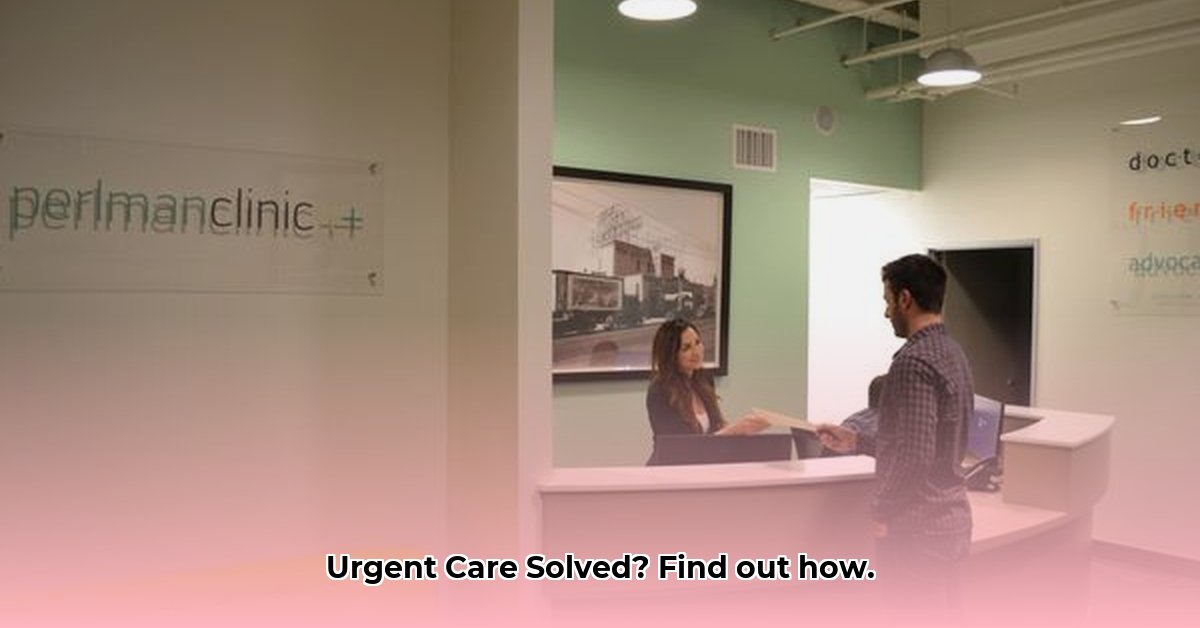
Reimagining Urgent Care: The Perlman Clinic Model
The healthcare industry often prioritizes speed and volume, leading to rushed appointments and impersonal interactions. But what if urgent care could be different? The Perlman Clinic at 1905 Calle Barcelona in Carlsbad, CA, offers a compelling case study in reimagining patient care. Instead of the typical high-volume, short-appointment model, Perlman Clinic prioritizes a patient-centered approach, emphasizing longer appointments, same-day access, and relationship building. This strategy aims to improve patient satisfaction and potentially, health outcomes. For additional examples of innovative urgent care, see other models. This article analyzes their approach, highlighting the potential benefits and challenges of this innovative model.
The Problem: A System Focused on Speed, Not Experience
Traditional urgent care clinics often prioritize seeing as many patients as possible in a given day. This high-volume approach, while efficient from a purely operational standpoint, can lead to several negative consequences. Patients often experience long wait times, rushed consultations, and a general feeling of being treated as a number rather than an individual. This lack of personalized attention can result in miscommunication, missed diagnoses, and ultimately, lower patient satisfaction. Is it truly efficient if it compromises patient care and fosters negative experiences?
Perlman Clinic's Solution: Personalized, Relationship-Based Care
Perlman Clinic offers a radical departure from this model. Their patient-centered approach prioritizes longer appointment times, allowing for thorough assessments and open communication. They aim to build authentic doctor-patient relationships, a crucial aspect often overlooked in high-volume settings. This dedication to individual attention is core to their mission. The clinic also prioritizes same-day or next-day appointments wherever possible, mitigating the stress of extended waiting periods.
Analyzing the Strategy: Benefits and Challenges
This patient-first strategy offers several potential benefits. Longer appointments allow for more thorough examinations, potentially leading to earlier diagnosis and more effective treatment plans. Improved communication fosters trust and understanding, leading to better adherence to treatment plans. Enhanced patient satisfaction, in turn, may drive referrals and positive word-of-mouth marketing. However, this approach also presents challenges. Longer appointments inevitably mean fewer patients can be seen per day, potentially leading to increased operational costs and longer wait times for some patients. Balancing the need for personalized care with the operational demands of running a clinic remains a critical task.
Measuring Success: The Need for Data-Driven Evaluation
Currently, comprehensive quantitative data on Perlman Clinic's outcomes isn't publicly available. While their website showcases positive patient testimonials illustrating improved satisfaction, concrete metrics—such as average appointment times, patient satisfaction scores, and health outcome improvements—are lacking. This highlights the critical need for more rigorous data collection and analysis in order to fully assess the effectiveness of their model. Utilizing patient satisfaction surveys, analyzing appointment length data, and tracking health outcomes could provide strong evidence to support their approach.
Recommendations for Future Growth and Sustainability
To further optimize their model and achieve long-term success, Perlman Clinic could consider several strategies:
- Invest in Data Collection: Implementing systems for collecting and analyzing patient satisfaction scores, appointment times, and health outcomes will provide valuable data for continuous improvement.
- Strategic Partnerships: Collaborating with other healthcare providers could broaden their referral network and enhance their service offerings.
- Technology Integration: Utilizing efficient scheduling and patient management software could streamline operations and improve appointment flow without compromising the personalized care aspect.
- Expand Service Offerings: Offering a wider range of primary care services could cater to a broader patient base and increase revenue streams.
Key Takeaways and the Future of Urgent Care
The Perlman Clinic’s innovative approach presents a compelling alternative to the traditional urgent care model. Their emphasis on patient-centered care, longer appointments, and relationship building has the potential to significantly improve patient experience and, potentially, healthcare outcomes. While challenges remain, particularly in balancing personalized care with the economic realities of running a clinic, the need for data-driven evaluation and continuous improvement will contribute to the model's overall success and scalability. The success of the Perlman Clinic will not merely be measured by profitability but also by its impact on the patient experience and the overall quality of urgent care. Their approach serves as a valuable case study prompting a much-needed conversation about how urgent care should evolve to meet the real needs of patients.